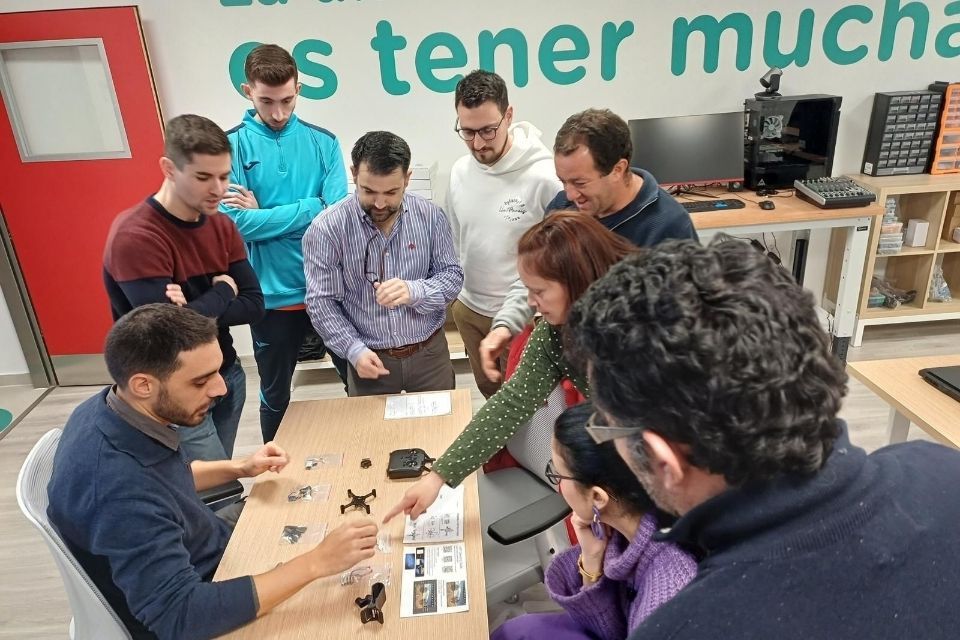The drone industry has grown exponentially in recent years, becoming a fundamental pillar of technological innovation in multiple sectors. From audiovisual projects to precision farming and industrial inspection among many others.
As technology advances and regulations become more accessible, the demand for qualified drone pilots continues to increase. In this guide, we show you a step-by-step journey to become a professional drone pilot, from your first practices to your advanced certifications.
Understanding Legislation and Regulations
Before you fly, it's crucial to familiarize yourself with the laws that regulate the use of drones in your country. In Spain, for example, the Spanish Aviation Safety Agency (AESA) is the competent authority. Some key points to consider include:
- Drone registration: All drones that exceed 250 grams must be registered.
- Required licenses: Depending on the use (recreational or professional), you will need to obtain the corresponding drone pilot license, such as the A1/A3 certificate or the advanced drone pilot certificate (A2).
How to get the drone pilot title?
To obtain your pilot's title, you must first identify the level of training needed according to the operation you want to perform and the drone you will be using. Keep in mind that training levels are cumulative; for example, if you need level 3, you must have previously obtained levels 0, 1 and 2.
1. Choose the type of certification you need
Depending on the use you will give to the drone and the environment in which you will fly, there are several types of licenses and flight categories. The most common certificates include:
Open category (A1/A3) : For flights in safe and less complex areas, ideal for beginners in flying recreational and professional drones in controlled environments.
Specific category (A2) : For flights in areas closer to people, applicable to heavier drones or for specific operations in urban areas.
Certificate category STS - 01/STS - 02: These certifications are intended for those who want to carry out remote sensing operations, such as photogrammetry or aerial mapping, using drones with specialized equipment. The STS - 01 category applies to operations in less complex environments, while the STS - 02 is intended for more complex operations that require additional risk analysis.
Determining the appropriate category is the first step in ensuring that specific requirements are met depending on the type of flight.
2. Complete the theoretical training
To obtain the degree, theoretical training is essential, since it provides the necessary foundations on:
Aviation safety regulations and drone operating rules.
Airspace, restricted flight zones and how to identify them.
Basic meteorological principles that affect flight.
Basic concepts of maintenance and control of different types of drones
This knowledge will prepare you to operate the drone safely and professionally, as well as help you pass the mandatory theory exam.
3. Do the practical training
Once you master the theory, it's essential to do internships to develop flight and maneuver skills. These practices can be carried out in controlled environments, where you can experiment with:
Basic and advanced drone operation
Precision and control exercises under different conditions.
Emergency maneuvers and simulations of real flight scenarios.
The practice allows you to become familiar with drone control and is especially useful for those who plan to specialize in technical areas, such as photogrammetry or industrial inspections.

4. Pass the certification exam
The theoretical exam is a requirement for obtaining the drone pilot title and is usually evaluated through a test of theoretical knowledge in regulations, safety, meteorology and operating procedures.
Passing the exam is essential, as it confirms that you have the necessary knowledge to operate drones responsibly and in accordance with the laws.
5. Registration and obtaining the certificate
After passing the exam, it is necessary to register as a drone operator with the State Aviation Safety Agency (EASA) in the case of Spain or the corresponding entity in other European countries. This registration is mandatory and ensures that you can operate drones legally and safely throughout the European Union.
Once you complete these steps and obtain the certificate, you will be officially qualified to work in the drone sector in a professional manner, accessing opportunities in multiple sectors, such as aerial photography, precision agriculture, industrial inspection and more.

Develop your specific skills
In addition to basic certification, many sectors require specialized skills to maximize the use of drones in various applications. Here are some of the advanced areas you can train in:
Drones in Building and Civil Works: Learn to use drones in construction and building projects, from planning and supervision to land evaluation.
Photogrammetry and Geographic Information Systems (GIS) using drones: Master photogrammetry techniques to generate accurate maps and 3D models.
Precision agriculture with drones: Learn to apply remote sensing and data analysis techniques in the agricultural sector.
Drone assembly and disassembly: Essential if you want to manufacture or repair drones, or even design customized solutions for customers.
Developing these skills will allow you not only to increase your competitiveness in the labor market, but also to offer advanced and personalized services that respond to the specific demands of each sector.
Connect and update with the community
The drone industry is evolving rapidly, and keeping up to date with the latest news is essential. Attend events, webinars and meetings that allow you to meet other drivers, share experiences and keep up to date on the latest trends.
With the right training and skills, you can excel in a variety of fields. If you are interested in learning more about our courses and how we can support you in your professional career, do not hesitate to contact contact us.






